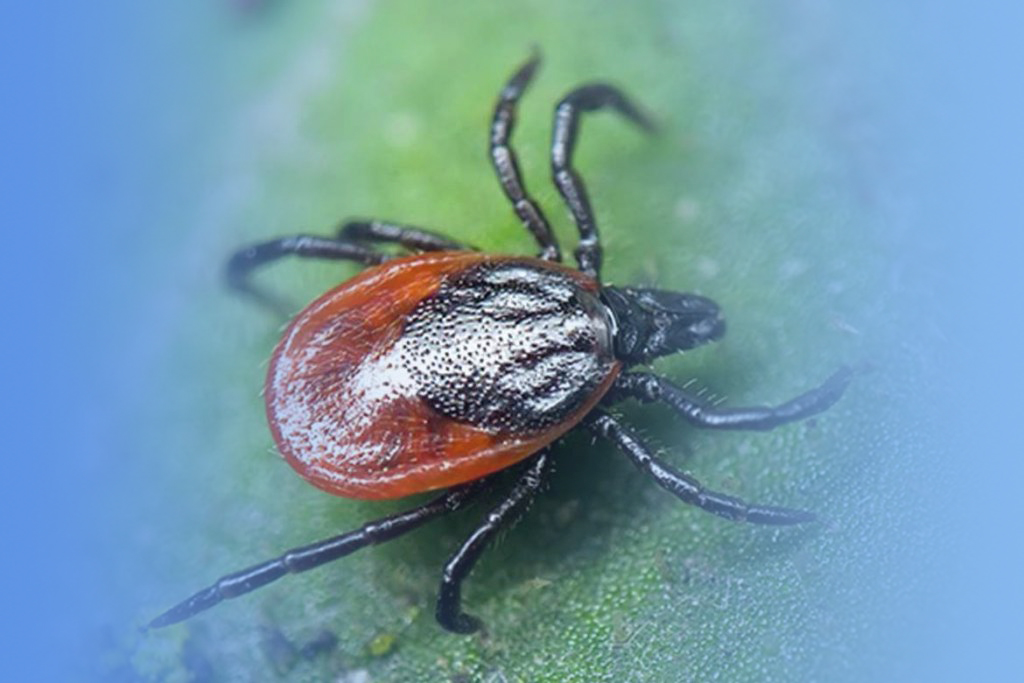[1] Thorington RWJr,Hoffman RS. Family Sciuridae[M]//Wilson DE,Reeder DM. Mammal species of the world:A taxonomic and geographic reference. 3rd ed. Baltimore:Johns Hopkins University Press,2005:754-818.
[2] Helgen KM,Cole FR,Helgen LE,et al. Generic revision in the Holarctic ground squirrel genus Spermophilus[J]. J Mammal,2009,90(2):270-305. DOI:10.1644/07-MAMM-A-309.1.
[3] Hoffmann RS,Smith AT. Family Sciuridae:Squirrels[M]//Smith AT,Xie Y,Hoffmann RS,et al. A guide to the mammals of China. Princeton:Princeton University Press,2008:172-195. DOI:10.1515/9781400834112.172b.
[4] Zhang F,Ju C. Spatial and temporal distribution of Spermophilus dauricus plague foci and animal plague[J]. Chin J Ctrl Endem Dis,2019,34(6):642-643. (in Chinese) 张芳,鞠成. 达乌尔黄鼠疫源地及动物鼠疫时空分布[J]. 中国地方病防治杂志,2019,34(6):642-643.
[5] Wei HB,Ren XL,Wu J,et al. Investigation on rodents and rodent-borne pathogens at Erenhot port in 2019-2021[J]. China Port Sci Technol,2022,4(10):14-19. DOI:10.3969/j.issn.1002-4689.2022.10.003.(in Chinese) 魏怀波,任星历,邬婧,等. 2019-2021年二连浩特口岸啮齿动物及其携带病原体调查[J]. 中国口岸科学技术,2022,4(10):14-19. DOI:10.3969/j.issn.1002-4689.2022.10.003.
[6] Li JY,Zhang CX,Lu M,et al. Infection by a previously uncharacterized Ehrlichia species in rodents from Inner Mongolia,Northern China[J]. Ticks Tick Borne Dis,2023,14(2):102116. DOI:10.1016/j.ttbdis.2022.102116.
[7] He W,Ke L,Guo X,et al. A survey on parasites in wild rodents in Xiji County,a northwestern part of China[J]. Trop Biomed,2017,34(2):449-452.
[8] Kang DM,Niu YF,Yan D,et al. Seasonal distribution of Meriones unguiculatus nest fleas in Kangbao pasture,a natural plague focus of Hebei Province,China[J]. Chin J Vector Biol Control,2021,32(3):276-281. DOI:10.11853/j.issn.1003.8280.2021. 03.004.(in Chinese) 康东梅,牛艳芬,闫东,等. 河北省鼠疫自然疫源地康保牧场长爪沙鼠巢蚤季节性分布研究[J]. 中国媒介生物学及控制杂志,2021,32(3):276-281. DOI:10.11853/j.issn.1003.8280. 2021.03.004.
[9] Fan MG,Li JY,Chang ZL,et al. Spermophilus dauricus epidemic focus main hosts parasitical fleas investigation results analysis of Inner Mongolia[J]. J Med Pest Control,2015,31(9):945-948. (in Chinese) 范蒙光,李建云,常子丽,等. 内蒙古达乌尔黄鼠疫源地主要宿主寄生蚤调查结果分析[J]. 医学动物防制,2015,31(9):945-948.
[10] Jiao DQ. The habits of Spermophilus dauricus and their control measures[J]. Mod Anim Husb Sci Technol,2021(6):81-82. DOI:10.19369/j.cnki.2095-9737.2021.06.043.(in Chinese) 焦德庆. 达乌尔黄鼠的生活习性及防治措施[J]. 现代畜牧科技,2021(6):81-82. DOI:10.19369/j.cnki.2095-9737.2021. 06.043.
[11] Li DM,Xu ZN,Zhu CY,et al. An epidemiologic investigation of rodent-borne pathogens in some suburban areas of Beijing,China[J]. Chin J Vector Biol Control,2019,30(1):12-17. DOI:10.11853/j.issn.1003.8280.2019.01.003.(in Chinese) 栗冬梅,徐兆楠,朱彩英,等. 应用TaqMan探针实时荧光定量PCR法调查北京市部分城郊区鼠传病原体流行状况[J]. 中国媒介生物学及控制杂志,2019,30(1):12-17. DOI:10.11853/j.issn.1003.8280.2019.01.003.
[12] Wang J,Ji WH,Su JH,et al. The research status on Spermophilus dauricus[J]. Chin Agric Sci Bull,2015,31(8):33-39. DOI:10.11924/j.issn.1000-6850.2014-2439.(in Chinese) 王静,纪维红,苏军虎,等. 达乌尔黄鼠(Spermophilus dauricus)生态学研究进展[J]. 中国农学通报,2015,31(8):33-39. DOI:10.11924/j.issn.1000-6850.2014-2439.
[13] Deng QH,Jin SN. Habitat selection characteristics of Citellus dauricus in Dongshan,Hailar[J]. Guangdong Agric Sci,2013,40(22):97-100,110. DOI:10.16768/j.issn.1004-874x.2013.22.022.(in Chinese) 邓庆华,金胜男. 海拉尔东山达乌尔黄鼠的生境选择特征[J]. 广东农业科学,2013,40(22):97-100,110. DOI:10.16768/j.issn.1004-874x.2013.22.022.
[14] Chidodo DJ,Kimaro DN,Hieronimo P,et al. Application of normalized difference vegetation index (NDVI) to forecast rodent population abundance in smallholder agro-ecosystems in semi-arid areas in Tanzania[J]. Mammalia,2020,84(2):136-143. DOI:10.1515/mammalia-2018-0175.
[15] Song XP,Li DM,Jia LJ,et al. Investigation of Bartonella infection in small mammals in Inner Mongolia,China[J]. Chin J Vector Biol Control,2015,26(3):233-237. DOI:10.11853/j.issn.1003.4692.2015.03.004.(in Chinese) 宋秀平,栗冬梅,贾丽军,等. 内蒙古小型兽类巴尔通体感染情况调查[J]. 中国媒介生物学及控制杂志,2015,26(3):233-237. DOI:10.11853/j.issn.1003.4692.2015.03.004.
[16] Wang N,Jin MZ,Jiang LF,et al. Pathogen investigation of rodents in the western ground crossings of Inner Mongolia[J]. Chin J Dis Control Prev,2020,24(6):716-722. DOI:10.16462/j.cnki.zhjbkz.2020.06.019.(in Chinese) 王宁,靳木子,蒋兰芬,等. 内蒙古西部口岸地区鼠类及其携带病原体调查[J]. 中华疾病控制杂志,2020,24(6):716-722. DOI:10.16462/j.cnki.zhjbkz.2020.06.019.
[17] Computational and Mathematical Methods in Medicine. Retracted:Detection and genotyping of Francisella tularensis in animal hosts and vectors from six different natural landscape areas,Gansu Province,China[J]. Comput Math Methods Med,2023,2023:9869158. DOI:10.1155/2023/9869158.
[18] Shao JW,Wei YH,Yao XY,et al. Pathogenic Leptospira species are widely disseminated among wild rodents in urban areas of Guangzhou,Southern China[J]. Microorganisms,2022,10(5):873. DOI:10.3390/microorganisms10050873.
[19] Xu JL,Chen JT,Xiong CR,et al. Pathogenic Leptospira infections in Hubei Province,central China[J]. Microorganisms,2022,11(1):99. DOI:10.3390/microorganisms11010099.
[20] Liu YX,Jia N,Xing YB,et al. Consistency of the key genotypes of Orientia tsutsugamushi in scrub typhus patients,rodents,and chiggers from a new endemic focus of northern China[J]. Cell Biochem Biophys,2013,67(3):1461-1466. DOI:10.1007/s12013-013-9646-0.
[21] Li F,Zhang ZT,Fang LZ,et al. Indoor and outdoor rodent hosts of Orientia tsutsugamushi,Shandong Province,China[J]. Emerg Infect Dis,2021,27(10):2731-2734. DOI:10.3201/eid2710. 210393.
[22] Khan AS,Khabbaz RF,Armstrong LR,et al. Hantavirus pulmonary syndrome:The first 100 US cases[J]. J Infect Dis,1996,173(6):1297-1303. DOI:10.1093/infdis/173.6.1297.
[23] Simpson SQ,Spikes L,Patel S,et al. Hantavirus pulmonary syndrome[J]. Infect Dis Clin North Am,2010,24(1):159-173. DOI:10.1016/j.idc.2009.10.011.
[24] Sun XH,Zhang XL,Hu KX,et al. Investigation on rats and pathogens in Sino-Russian Manzhouli-Zabaikalsk frontier regions[J]. Chin J Front Health Quar,2010,33(5):313-315,319. DOI:10.16408/j.1004-9770.2010.05.002.(in Chinese) 孙肖红,张晓龙,胡孔新,等. 2009年中俄满洲里-后贝加尔斯克口岸地区鼠类及其携带病原的调查研究[J]. 中国国境卫生检疫杂志,2010,33(5):313-315,319. DOI:10.16408/j.1004-9770.2010.05.002.
[25] Yu B, Liu XY, Wang YP, et al. Surveillance and analysis of rodents and pathogens carried by them at Mohe Port in Heilongjiang Province, China, in 2019-2022[J]. Chin J Vector Biol Control, 2023, 34(6):728-732. DOI: 10.11853/j.issn. 1003.8280.2023.06.004.(in Chinese) 于波,刘星媛,王一平,等.黑龙江省漠河口岸地区2019-2022年鼠类及其携带病原监测结果分析[J].中国媒介生物学及控制杂志,2023,34(6):728-732. DOI: 10.11853/j.issn. 1003.8280.2023.06.004.
[26] Jin MZ,Hao GF,Wang J,et al. Investigation on natural infection of rodent-borne pathogens in rodent populations in Urad port area,Inner Mongolia,China in 2015[J]. Chin J Vector Biol Control,2018,29(3):296-297. DOI:10.11853/j.issn.1003. 8280.2018.03.020.(in Chinese) 靳木子,郝广福,王静,等. 内蒙古乌拉特口岸地区2015年鼠类携带病原体情况调查[J]. 中国媒介生物学及控制杂志,2018,29(3):296-297. DOI:10.11853/j.issn.1003.8280.2018. 03.020.
[27] Zhang G, Sun QT, Liu ZC, et al. A study on law of activity of S. dauricus in Jilin Province plague nature focus[J]. Chin J Ctrl Endem Dis, 2009, 24(4): 273-274. DOI: CNKI:SUN:DYBF. 0.2009-04-014. (in Chinese) 张贵,孙启廷,刘振才,等.吉林省鼠疫自然疫源地达乌尔黄鼠活动规律的研究[J].中国地方病防治杂志, 2009, 24(4):273-274. DOI: CNKI:SUN:DYBF.0.2009-04-014.
[28] Liu GC,Kang DM,Yan D,et al. A study of the density of plague host Spermophilus dauricus by concentration method[J]. Chin J Vector Biol Control,2021,32(2):158-160. DOI:10.11853/j.issn.1003.8280.2021.02.007.(in Chinese) 刘冠纯,康东梅,闫东,等. 应用集中度法探讨鼠疫宿主动物达乌尔黄鼠密度变化规律[J]. 中国媒介生物学及控制杂志,2021,32(2):158-160. DOI:10.11853/j.issn.1003.8280.2021. 02.007.
[29] Huang XB,Xie BB,Long JL,et al. Prediction of risk factors for scrub typhus from 2006 to 2019 based on random forest model in Guangzhou,China[J]. Trop Med Int Health,2023,28(7):551-561. DOI:10.1111/tmi.13896. |



